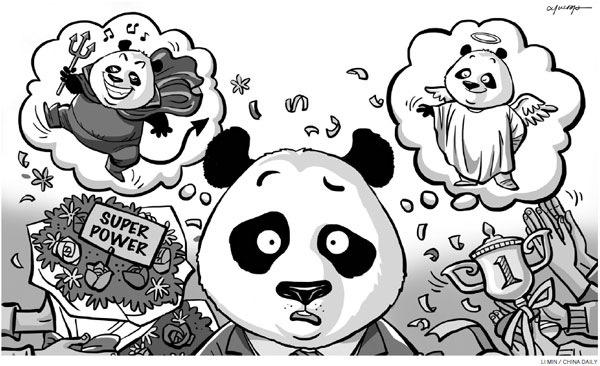Two sides to documentary Super China
By Wu Yixue (China Daily) Updated: 2015-02-28 08:32

China and the ROK have been engaged in extensive exchanges in multiple fields in recent years, but compared with Chinese people who have basically grasped a full knowledge about the ROK, many people in the ROK only have a superficial understanding of China. This is not conducive to ROK's ties with China and has prompted calls for people in the ROK to learn more about China. According to its directors, the KBS documentary was made in response to such calls.
They say the documentary was aimed at presenting to ROK audiences a China different from the stereotyped images they were used to, and to remind viewers that present-day China is no longer what it was decades ago. In this sense, the documentary has perhaps played a positive role in helping viewers to gain a truer and more objective picture of China.
However, Chinese should not become excessively intoxicated by the image of China presented by KBS. There are always two sides to a coin. A distorted view of China caused a sense of superiority among some in the ROK, but some ROK viewers of the documentary series have said they feel unease at China's rapid buildup after watching the documentary, as it left them with the impression that China is a super-strong country. This has even been exaggerated into a sense of crisis by some.
Some ROK scholars have even suggested the documentary was subtly peddling a "China threat", because, although it did not overtly claim there was a threat from China, neither did the documentary elaborate on the opportunities arising from China's development that the ROK can take advantage of.
The Chinese people have become used to their country's image being distorted and tainted in foreign countries. So, they easily feel exalted at even the slightest hint of objectivity. Such a mentality should be discarded.
The author is a senior writer with China Daily. wuyixue@chinadaily.com.cn

I’ve lived in China for quite a considerable time including my graduate school years, travelled and worked in a few cities and still choose my destination taking into consideration the density of smog or PM2.5 particulate matter in the region.











